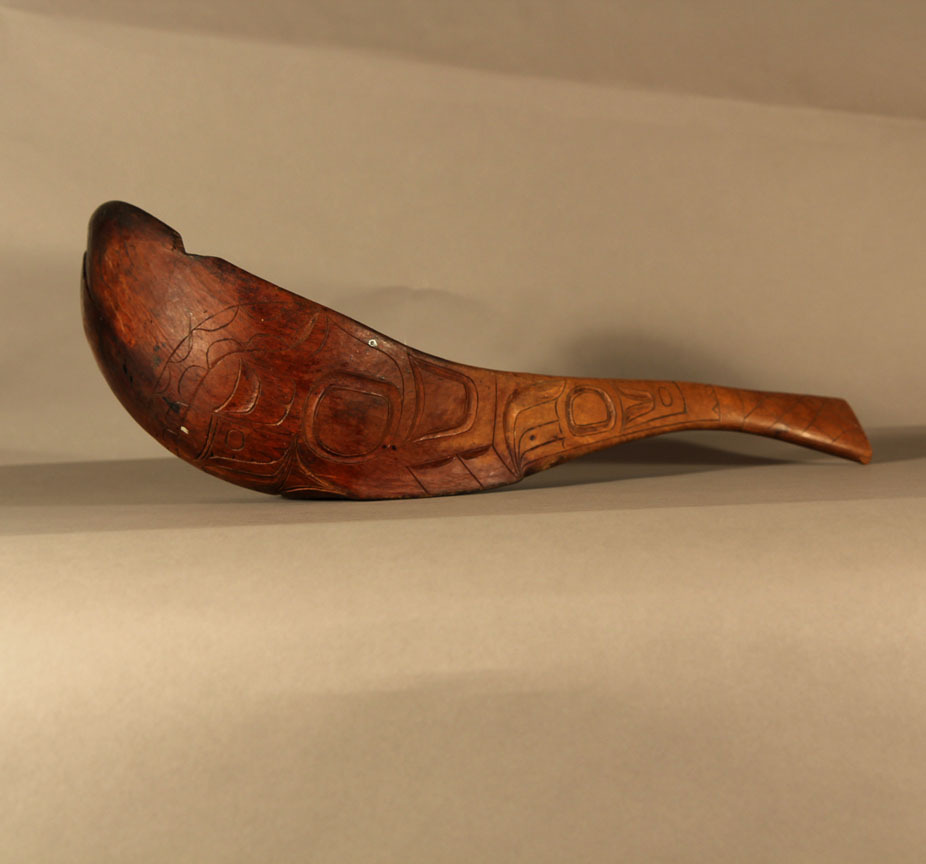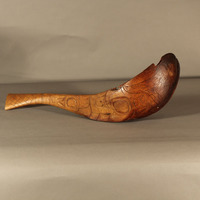Elevated Eating : Large Potlatch Ladle
Potlatch ladles were used during traditional Northwest Indian ceremonies known as Potlatches. One particular element of potlatches was to use large ladles like this one to divy oil out to the honored individuals. This potlatch ladle has a sticky residue and is stained darker brown at the bowl part of the spoon due to oil contact. It also has an elaborate carving of a salmon that has a large, toothy, mouth, big eyes and a tail that also serves as the handle. The carvings used bilateral symmetry to conform to the space of the ladle which causes animals become abstract. The carvings were normally low, and commonly used themes including birds, land creatures and sea creatures. These animals were displayed to decorate the objects as well as instill the object with the animal spirit.
During potlatch ceremonies, tribe leaders or other people of rank would redistribute their wealth among the village and give gifts to rival tribe leaders. The whole ceremony was about rank and elevating one's social status. Potlatch ladles were an important indicator of status because society placed great value on richly decorated utensils. Potlatches often marked important events such as weddings, raising of totem poles, and births. Potlatch ceremonies are not as common today because in 1884, the United States government made them illegal, in attempts to civilize and Christianize the native people. Today, the ceremonies are used to honor the death of family members or are incorporated into large festivals such as the Seattles potlatch festival.


